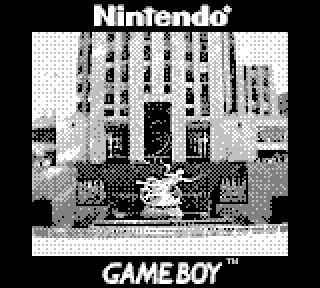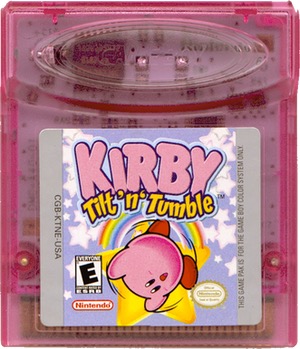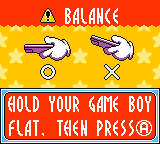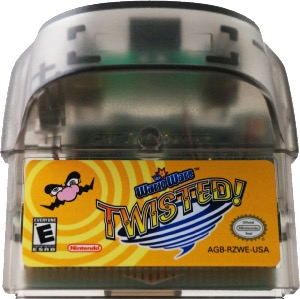Cartridge Versatility: Game Boy Sensors

By the end of the 90s, most home gaming consoles switched from cartridges to optical discs. However, most portable consoles, with a few exceptions, have never switched to disks; they continued to work on cartridges and gradually migrated in the direction of downloadable content 1 . The cartridges were rather small, contained only the essentials for the game, and they didn’t need to precisely position the laser on a tiny rotating disk in a frequently moved device. Over time, progress in miniaturization allowed even more advanced hardware functions to fit into the cartridge. This trend has gradually led to the emergence of cartridges with sensors that expand their capabilities.
In this article, we will look at three cartridges for three different generations of the Nintendo Game Boy platform, each containing additional hardware. These unsuccessful cartridges will allow us to understand where, in the opinion of Nintendo, technology should have brought them.
This is the third article on curious video game cartridges. Translation of the first and second: 1 , 2 .
Game boy camera
 The Game Boy Camera, released in 1998 for the first Game Boy, was an unusually shaped cartridge containing a full-featured digital camera and memory for storing thirty photos. Despite the fact that the resulting photos were microscopically small and grainy by modern standards, at the turn of the century the Game Boy Camera attracted a lot of attention and was even recognized as the Guinness Book of Records in its 1999 edition as the smallest digital camera 2 .
The Game Boy Camera, released in 1998 for the first Game Boy, was an unusually shaped cartridge containing a full-featured digital camera and memory for storing thirty photos. Despite the fact that the resulting photos were microscopically small and grainy by modern standards, at the turn of the century the Game Boy Camera attracted a lot of attention and was even recognized as the Guinness Book of Records in its 1999 edition as the smallest digital camera 2 .')
Game Boy Camera software was created by Game Freak. This name may be familiar to Pokemon lovers: Game Freak is the main developer of the Pokémon series; she developed all the games from Pokémon Red and Blue (1996) to Sword and Shield (will be released at the end of 2019). Creating software for Game Boy Camera is a strange page in the history of 3 companies, all other projects of which were versions of the extremely popular franchise.
 In accordance with the style of the gaming platform for which the Game Boy Camera was created, it had a funny user interface, reminiscent of the aesthetics of the WarioWare Nintendo series . Each screen was decorated with chaotic symbols, and almost everything moved and twitched in the interaction. The cartridge allowed the owners not only to take pictures, but also to decorate them with stickers and scribbles that looked as crazy as everything else.
In accordance with the style of the gaming platform for which the Game Boy Camera was created, it had a funny user interface, reminiscent of the aesthetics of the WarioWare Nintendo series . Each screen was decorated with chaotic symbols, and almost everything moved and twitched in the interaction. The cartridge allowed the owners not only to take pictures, but also to decorate them with stickers and scribbles that looked as crazy as everything else.Although at the time of the Game Boy Camera release, digital photography was not completely unknown, before the cameras appeared in smartphones 4 that opened the doors for amateur photography, there were still a few years. And at this time, the Game Boy Camera was a relatively inexpensive carrier for research and creativity, which became an interesting look at the birth of the movement, which later had a huge impact on society.
 A few years ago, blogger David Friedman shared a treasure trove of photos of New York made by Game Boy Camera in 2000 5 . This is a wonderful, unpretentious and pixelated time capsule; In addition, there are other examples of photos from Game Boy Camera 6 on Flickr.
A few years ago, blogger David Friedman shared a treasure trove of photos of New York made by Game Boy Camera in 2000 5 . This is a wonderful, unpretentious and pixelated time capsule; In addition, there are other examples of photos from Game Boy Camera 6 on Flickr.Given the absence of any sequels, it is logical to assume that Game Boy Camera did not become a terrific hit for Nintendo. Nevertheless, the photograph was obviously still a weakness of the company: the Nintendo Wii released in 2006 had a digital photo gallery application, and DSi (2009), 3DS (2011) and Wii U (2012) had built-in cameras. And although most people do not see much use today in a low-quality low-quality black and white camera, the Game Boy Camera continues to attract attention. Inventive users have come up with many ways to transfer images from the camera to computer 7 , although for me personally it was always enough to just make a Photo Boy screen photo using a smartphone.
Kirby Tilt 'n' Tumble
 Kirby Tilt 'n' Tumble was the first example of a new kind of gaming input embedded in a Game Boy 8 cartridge. This bright pink cartridge, released for the Game Boy Color in 2000, had a built-in accelerometer, which allowed (or rather, demanded) to control Kirby by tilting the Game Boy in different directions.
Kirby Tilt 'n' Tumble was the first example of a new kind of gaming input embedded in a Game Boy 8 cartridge. This bright pink cartridge, released for the Game Boy Color in 2000, had a built-in accelerometer, which allowed (or rather, demanded) to control Kirby by tilting the Game Boy in different directions.The gameplay itself is a bit like an endless set of tilt-driven mobile games of the late 2000s - Kirby who is enclosed in a ball must get to the exit, collecting items along the way. Control instead of a character with a real-world object gave the game a hue of novelty, and in general it received a favorable reception. But despite the good reviews, not a single game with an accelerometer was released for the Game Boy Color (however, two such games appeared on the Game Boy Advance 9 ).

The players themselves had to calibrate the accelerometer.
Tumble was created by HAL Laboratory - a partner developer 10 who has had close ties with Nintendo for many years. President of HAL Laboratory Satoru Iwata around the time of the release of this game received a position in Nintendo, and two years later even became president of this company. Given the order of events, we can assume that it was Iwata who brought to Nintendo an interest in gesture control. After all, the Wii released in 2006 was entirely dependent on gesture control, not to mention accelerometers, similar to those used in Tumble . Of course, we are not obliged to take this assumption at face value - for example, the first iPhone, released in 2007, also actively used accelerometers, which led to the appearance of a huge shaft of motion-controlled mobile games over several years of its life. Perhaps then it was just time for the idea of motion control with accelerometers.
WarioWare: Twisted!
 The second part of a long series of WarioWare, released in 2004 WarioWare: Twisted! for the Game Boy Advance, it had not only its own input type, but also a special output method: the gyroscope determined how the player held the console, and the small vibration motor created noisy tactile feedback. Although the vibration function was not a novelty, it was a gyroscope 11 .
The second part of a long series of WarioWare, released in 2004 WarioWare: Twisted! for the Game Boy Advance, it had not only its own input type, but also a special output method: the gyroscope determined how the player held the console, and the small vibration motor created noisy tactile feedback. Although the vibration function was not a novelty, it was a gyroscope 11 .Like its predecessor, Twisted! It was a collection of so-called "micro-games" - small tasks that needed to be explained, understood and completed in just a few seconds. In most of the micro-games of this part of the game, a gyroscope was used, forcing players to twist and turn the console in conditions of a strict time limit. Twisted! It turned out for Nintendo a big hit and the first step in transforming the concept of WarioWare from one successful game into a long series. For fifteen years after her appearance, six more sequels were released.

One of the micro-games: you need to return to the place the warped spine of Vario.
Twisted! , like Kirby Tilt 'n' Tumble , can be considered the first steps on the road to creating a Wii. A few years after the release of the Wii, its accelerometer-based controllers were supplemented with a MotionPlus gyro device. The accelerometers used in Kirby Tilt 'n' Tumble and the first Wii controllers measure acceleration. They are useful for measuring orientation changes or sudden movements, but they cannot determine exactly how a player holds an item. Gyroscopes do not measure movement, but orientation, which provides much more precise control of movement. If you combine these two types of sensors, as was done in MotionPlus, you can implement very precise motion control.
Twisted! It was the only WarioWare game with specialized equipment, but experiments with gameplay styles continued: in Touched! (2004) DS stylus was used, in Smooth Moves (2006) Wii motion control was used, and in Snapped! (2008) - DSi camera. The WarioWare series has become a kind of test platform for curious gameplay ideas, and experiments with new types of input began with it.
Conclusion
Each of these cartridges introduced something new and interesting to its console, but embedding additional equipment in the cartridges had its drawbacks. Obviously, these cartridges were more expensive to manufacture, that is, additional equipment was obliged to justify itself. In fact, this was quite rare, but sometimes such experiments could lead to a new and even unique gameplay.
In the next, last article of this series, we will talk about completely non-standard cartridges that allow players to communicate with the outside world.
Notes
- Sony PlayStation Portable is the only portable system I know that uses optical discs ( Universal Media Discs ) as carriers.
- You can buy a copy of the 1999 edition of the Guinness Book of Records for about $ 4 on eBay, or take the word Petapixel .
- Of the 45 Gamefreak games released since the founding of the company in 1989 until the end of 2018, two thirds are associated with the Pokémon franchise.
- There is a wide choice of devices, from quality products like BitBoy to homemade products, for example, such a solution based on Arduino . Fans of vintage "iron" can even get MadCatz Camera Link - a device released at a time when the Game Boy Camera was still on the market.
- The history of camera phones is amazing. Despite the fact that they spread everywhere only by the mid-2000s, the fully implemented camera phone was patented back in 1997 .
- David Friedman shared his discovery in 2014 in a blog , and kindly allowed to use one of the photos in my post. Thank you, David.
- Flickr appeared a few years after the heyday of Game Boy Camera, but the Photo Collection of the GameBoy Camera still has a lot of wonderful photos. As far as I can tell, this 2004 photo of the Christmas tree is the first shot on Flickr by Game Boy Camera.
- Someone may argue that this title should be given to Game Boy Pocket Sonar - a fish detection device sold only in Japan, but since the sonar was not used to control the games built into the cartridge, it cannot be considered an input device.
- Koro Koro Puzzle Happy Panechu! (2002) and Yoshi's Universal Gravitation (2004), published by Nintendo.
- A second-party developer is a game studio that creates games exclusively for the owner of a certain platform.
- Port Vigilante 8 , released in 1998 for Game Color Boy , was the first game for the Game Boy console with a vibration feature.
Links
- The history of camera phones on Wikipedia
- Patent for camera phone
- Game Boy Camera on Wikipedia
- Game Boy Pocket Sonar
- List of Game Freak games on Wikipedia
- Kirby Tilt 'n' Tumble on Wikipedia
- List of games for Game Boy with additional equipment on Reddit
- List of games in the WarioWare series on Wikipedia
- Rumble Cartridge Games on Giant Bomb
- Smallest Digital Camera
- The Game Boy Camera by Adam Loza
- WarioWare: Twisted! on wikipedia
Source: https://habr.com/ru/post/453434/
All Articles